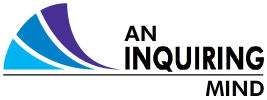 Introduction
Introduction
I recently came across Yves Morieux’s TED Talks about managing complexity with cooperation which resonated with me. This post shares what I have learned from the talks and other information I have found on the subject.
An Increasingly Complex World
Companies are facing an increasingly complex world brought about by advances in – and continuously changing technology. Businesses have more customers who are perhaps harder to please and less loyal, and competitors who are smarter and more agile. It seems a company’s competitive edge is elusive and fleeting.
This complexity appears in the number of goals companies set for themselves. Morieux observed an increase from 4-7 performance indicators in the late 1950’s to 25-40 indicators in the 2010’s. Many indicators are in conflict, such as high quality at a low margin, or customized offerings and standardization to improve ROI.
This complexity is neither a good or bad thing, it comes with opportunities and challenges. It is how companies handle this complexity that determines how they will perform.
Productivity and Engagement in Decline
Morieux shows that productivity growth in Europe has declined from 5% per annum in the 1960’s to under 1% per annum in the 2000’s; despite all the technical advances that have taken place to make us more effective and efficient. When productivity grows at 5% per annum, our standard of living doubles every 15.2 years, and at 1% it doubles every 70.7 years. With productivity increasing at less than 1% and inflation increasing at 2%, it is no wonder that we feel less well off than our parents – most of us are!
He attributes this to the basic tenets of management effectiveness – clarity, measurement and accountability, becoming counterproductive for people in our increasingly complex world.
Engagement at work is also in decline, people are miserable and actively disengaged despite corporate efforts at team building, company events, and training of managers to better motivate employees.
Declines in Productivity and Engagement, Morieux initially thought were a consequence of each other. However he has concluded that both are symptoms of the same root cause: The traditional two pillars of management – the “Hard” structure processes and systems, and the “Soft” feelings, relationships and personalities.
Responses to Complexity
Companies typically try to cope with this increased complexity by adding more “complicatedness”. This complicatedness is in the form of more structure, performance measures and procedures. Morieux observed a 50% to 350% increase in internal company complicatedness in the last 15 years. These “hard” changes also tend to be dehumanizing, so “soft” initiatives are introduced to compensate. The intent of these soft initiatives is to enhance positive emotions in an environment where interpersonal relationships and collaboration flourish.
The “hard” complicatedness changes tend to have managers spending a lot more time writing reports and involved in coordination between structures, leaving less time to manage their teams. Team members lacking appropriate management guidance can expending effort ineffectively, impeding overall productivity. This decreases employees levels of dissatisfaction and disengagement – breaking down opportunities for cooperation.
When people work together collaboratively and focus on harmonious environs, tough trade-offs become harder to make especially at the expense of feelings. In our homes, we spend money on multiple TV’s to avoid the cooperative negotiation and compromises needed to share viewing programs on a single TV. It appears easier to remove the constraint and buy a second TV than strain our relationships by negotiating tough trade offs. However what is easy is often not correct. Independence and self sufficiency does not build meaningful relationships – interdependence, cooperation and compromise does.
There is a Better Way – Cooperation
Morieux asserts that the “hard” and “soft” traditional pillars of management have become obsolete. They are the cause of company dysfunction in our complex world. Focusing on cooperation is the better way. Cooperation, done right, overcomes complexity, without complicatedness and interpersonal issues.
Cooperation cannot be decreed. Company leadership needs to create the environment and incentives in which cooperation can flourish. Morieux has developed six smart rules to cut through the complicatedness in companies caused by our increasingly complex world. The first three rules enable cooperation. The second three rules incentivize appropriate cooperation.
Rule 1: Coworkers Know Each Others Roles
It is no longer enough to only know one’s job function in isolation. Employees need to know how their job relates to that of their coworkers, as well as appreciate the coworkers’ job function and how it fits in with theirs.
Managers need to ensure that coworkers have the opportunity to observe, interact and encouraged to cross train. Additionally, managers should have a deep understanding of the roles of their team members and related functions in the organization. Observations, judgments and drilling down to root causes need to supplement formal metrics and reports.
Rule 2: Identify and Reinforce Integrator Roles
In any organization there are some roles that that interact with a number of other roles. These roles are identified as “Integrator Roles”. These roles should be elevated with the appropriate authority to encourage cooperation with the related roles.
Morieux uses the example of a hotel chain that was experiencing falling occupancy rates, declining profits and poor customer satisfaction. The receptionists who in addition to interacting with customers, drew on housekeeping, room service and maintenance to fulfil customer requests and complaints. Each of these roles operated with their own agenda and little appreciation of other roles in the organization (No Rule 1).
Management first thought the fault lay with the receptionists and incentivized them based on occupancy rates and sales – to no avail. After studying the situation in greater depth, management noticed the lack of coordination between the front desk, housekeeping, room service and maintenance roles. It resulted in receptionists appeasing dissatisfied customers with refunds and upgrades, as well as leaving the front desk to fix problems themselves because of the lack of cooperation from the other roles. An extra function with process and procedures was added to coordinate the activities between these four roles. This did not work as it was not responsive to the real-time and unique nature of requests from the receptionists.
A better approach is to empower the receptionists. They are playing the integrator role, and they should have a greater say about the priorities of their requests to housekeeping, room service and maintenance. The discretionary power of the integrator roles displaces some of the formal rules and procedures. The larger a company gets, the greater the need for integrators, and therefore the fewer formal rules there should be. Unfortunately, most managers think the exact opposite is true.
Rule 3: Expand Available Power
Generally it is the people on the front line who feel the brunt of the lack of cooperation. The lack of cooperation encourages the front line to only focus on their tasks withdrawing deeper into their silos. It is these people who need to be empowered, so they can risk opening up their silo, trusting others, showing initiative and being transparent about performance.
This additional power is created, not taken away from other systems. I call this new power “power to cooperate”. Assigning integrators responsibilities for improving the company’s performance through better cooperation between themselves and other parts of the organization.
Rule 4: Increase the Need for Cooperation (Interdependence)
Assign integrators responsibilities to drive trade offs together with increased spans of authority over other roles with the mandate to drive greater cooperation.
Greater cooperation comes from measuring integrators’ performance on the overall outcome involving the other roles, not only within their role.
Limiting resources increases cooperation, as illustrated by the multiple TV example. In the hotel example, customers were unhappy because maintenance housekeeping, and room service were not responding adequately to front desk requests. It is incorrect to think that assigning additional maintenance, housekeeping and room service resources to the front desk could help. A better approach would be to make all four roles collectively responsible for customer satisfaction. Let the four roles find their solutions to improve customer satisfaction without adding any additional resources.
Driving goals and accountabilities to the front line where those employees are best positioned to resolve trade offs in real time, eliminates complicatedness in the hierarchy.
Rule 5: Have Employees feel the Shadow of the Future
The longer it takes for the consequences of a decision to take effect, the more difficult it is to hold a decision maker accountable. If it is possible, bring the consequence closer to the decision.
Assigning decision makers to downstream work will cause them to take the downstream work more into consideration when making decisions. For example having a manager responsible for product development also responsible for overseeing it’s production and maintenance.
Rule 6: Reward Cooperation and Expose Uncooperativeness
There are situations where it is impossible to have a decision/consequence feedback loop in a reasonable time frame or at all. In these cases, it is up to managers to close feedback loops by monitoring the degree of cooperation of the roles required to resolve a situation, exposing those roles that need to cooperate more and acknowledging the the roles who took collective ownership and cooperated.
In the Hotel example, the receptionists could be encouraged to highlight instances of cooperation with the other roles, and this recognition should in turn encourage those roles to be more cooperative.
As a general guideline – reward people on outcome metrics and use performance metrics only to track, understand and diagnose situations or problems. It is important not to confuse the two types of metrics.
How Smart Rules Work
These smart rules manage complexity not by prescribing specific behaviours but by creating an environment in which cooperative behaviour takes place to find ways to resolve situations. This voluntary front line cooperation breeds creativity – formulating customized solutions leading to greater organizational diversity.
Yet despite this diversity there are great efficiencies in the reduction of resources and leveraging the skills and ingenuity of employees. As employee involvement increases, so does satisfaction, engagement and performance.
Clarity, Measurement and Accountability
These three attributes of management effectiveness are very important. However to adapt to our ever increasing complexity, we need to change the way we think about them. Focus more on team cooperation to achieve desired outcomes, rather than the individual’s following of rules and procedures. Reward teams based on how the whole team did. Imagine a long distance race where teams of runners compete against other teams based on “last person in” rather than “first person in”.
Clarity
Instead of thinking of clarity in relation to individual’s performance, see it in terms of a common vision and desired outcomes. Clarify outcomes and the organization’s vision rather than detailed job descriptions, processes and procedures. Let the people being managed to find their way.
Measurement
An axiom to “What gets measured gets managed/done” is “What gets measured gets highly valued”. When the focus is on performance, the individuals / groups become attached to that performance metric often to the exclusion of everything else. Rather, measure the desired outcome, and the individuals / groups contribution. Contributions worthy of recognition may include a compromise, generosity or a sacrifice for the benefit of the overall outcome. Often judgment is required when measuring soft items like cooperation.
Accountability
Accountability as more than “being responsible for”. It is “taking ownership of”. Ownership implies an emotional connection to the outcome. Additionally the ownership needs to be of the overall result, not just the individual / group contribution.
A Relay Race
In the following video, Morieux uses the example of the 2003 World Championship 4×100 womans final relay race where the French beat the US who were favoured to win as an example of cooperation at work.
Conclusion
I would like to conclude with Morieux’s tips on what not to do when encouraging cooperation. If you catch yourself doing any of these don’ts, you are probably not applying the smart rules.

